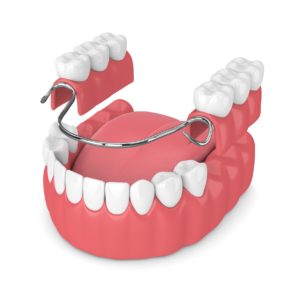 Your teeth are designed to last for a lifetime, but that’s not a reality for many Americans. At least 120 million adults are missing one or more teeth. You have more options than ever to treat tooth loss; however, dental bridges and partials continue to be common solutions. Although they might seem similar, there is a big difference between partial dentures and dental bridges. Here’s what you need to know to make the right choice for your smile.
Your teeth are designed to last for a lifetime, but that’s not a reality for many Americans. At least 120 million adults are missing one or more teeth. You have more options than ever to treat tooth loss; however, dental bridges and partials continue to be common solutions. Although they might seem similar, there is a big difference between partial dentures and dental bridges. Here’s what you need to know to make the right choice for your smile.
Rebuild a Beautiful, Functional Smile
Every tooth is invaluable to your oral health and quality of life. Losing a single tooth increases your risk of cavities, gum disease, and additional missing teeth. Replacing missing teeth can reduce the complications associated with tooth loss while also improving your ability to eat, speak, and smile without a worry in the world.
Among the most popular options to treat tooth loss are bridges and partials. Although both can fill the spaces in your smile, there are differences between them.
Dental Bridges
A dental bridge has been used for generations to replace 1 to 3 missing teeth in a row. Your dentist takes an impression of your mouth to recreate the portions of your teeth above the gum line. They are made of all-ceramic material to look like your natural teeth to blend in seamlessly. The bridge is held in place by reshaping the adjacent teeth to bond dental crowns over them.
You can also support a bridge with dental implants. The implants replicate the roots of your teeth, anchoring your bridge to your jawbone. A traditional bridge and crown can last for about 10 years, while an implant-supported solution can thrive for decades.
Partial Dentures
A partial denture differs from a bridge because it’s a removable method of treating nonconsecutive tooth loss. Prosthetic teeth are crafted to match the appearance of those you’ve lost. They are affixed to a gum-colored base with a metal framework. This allows it to clip or clasp on to supporting teeth to hold it in place.
A partial can last for about 15 years; however, various factors affect their lifespan, like how well you maintain the appliance. It’s normal for your mouth to change shape over time, which can cause your partial to fit improperly.
Which is Right for Me?
Everyone’s mouth and needs differ, so there isn’t any way to determine which is right for you without first having a consultation with your dentist. They will examine your mouth and learn more about your goals before explaining all your options. They’ll help you choose the best prosthetic to restore your smile.
Take your first step toward a confident future by scheduling a consultation with your dentist. They’ll create the personalized plan you need to fill the gaps in your smile.
About Dr. John A. Kivus
Dr. Kivus earned his dental degree from the Tufts University School of Dental Medicine before continuing his training in reconstructive and esthetic dental treatments. He strives to provide state-of-the-art solutions to help each patient achieve their best smile. If you’re ready to treat your tooth loss, contact our office today to schedule your consultation.
